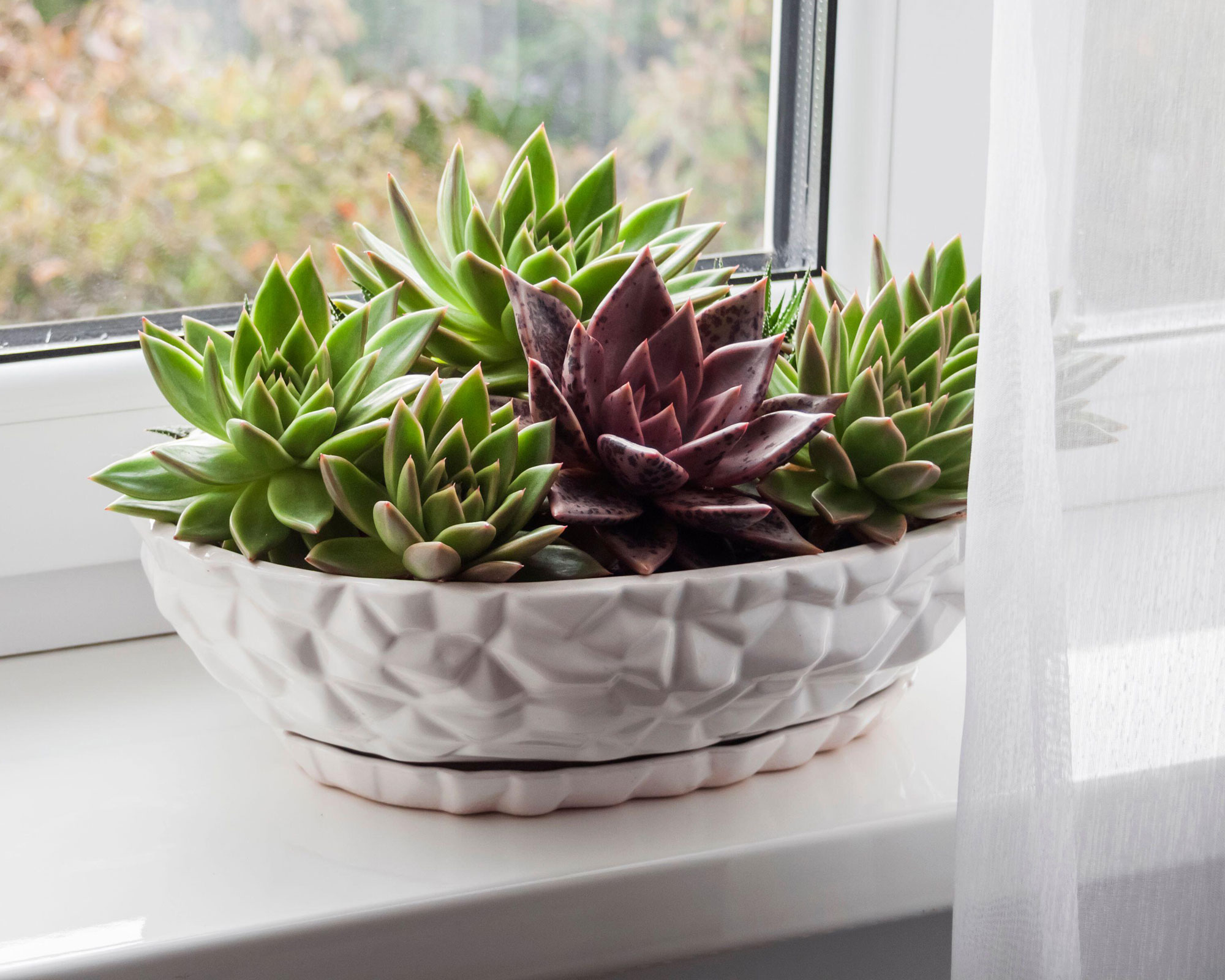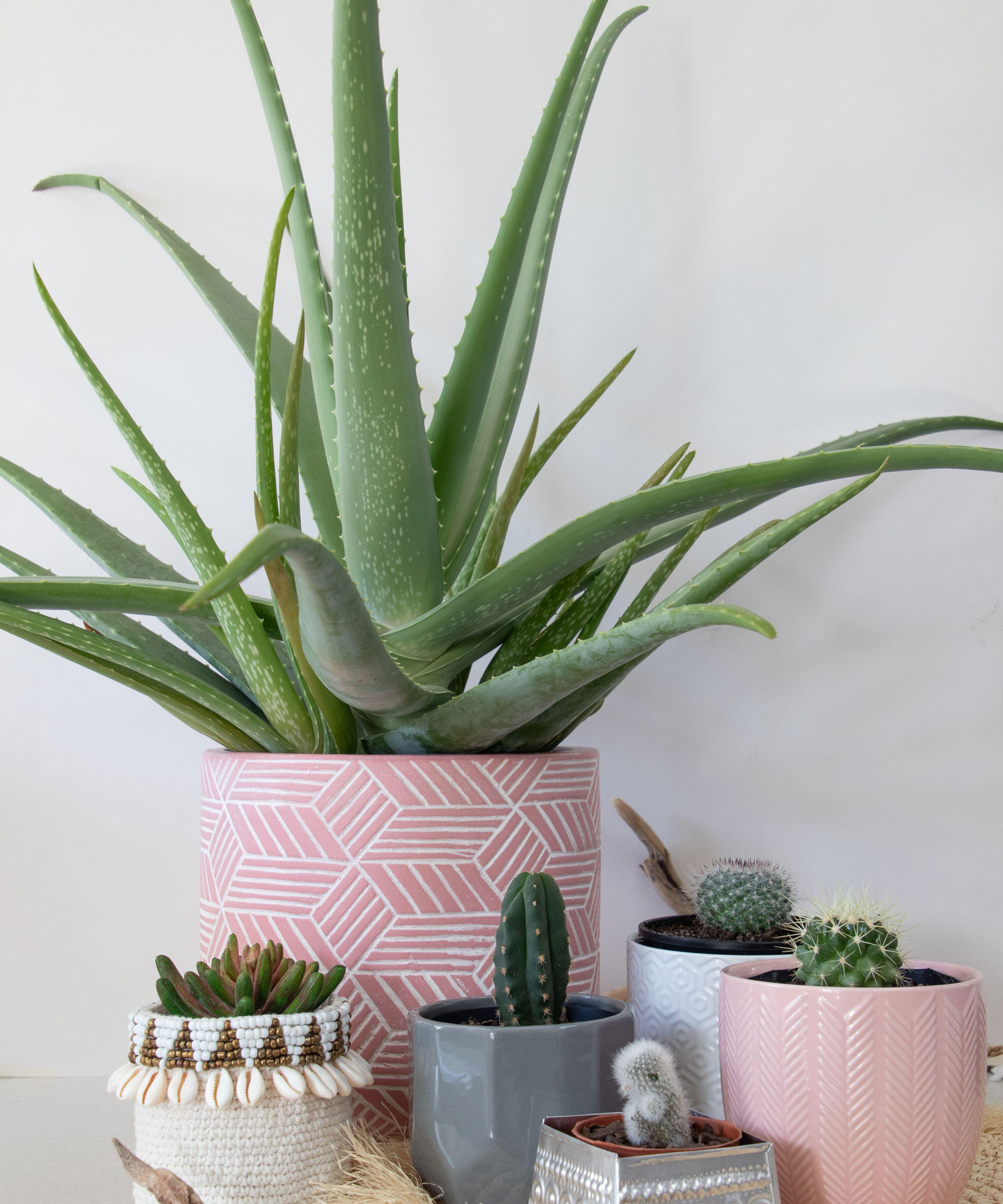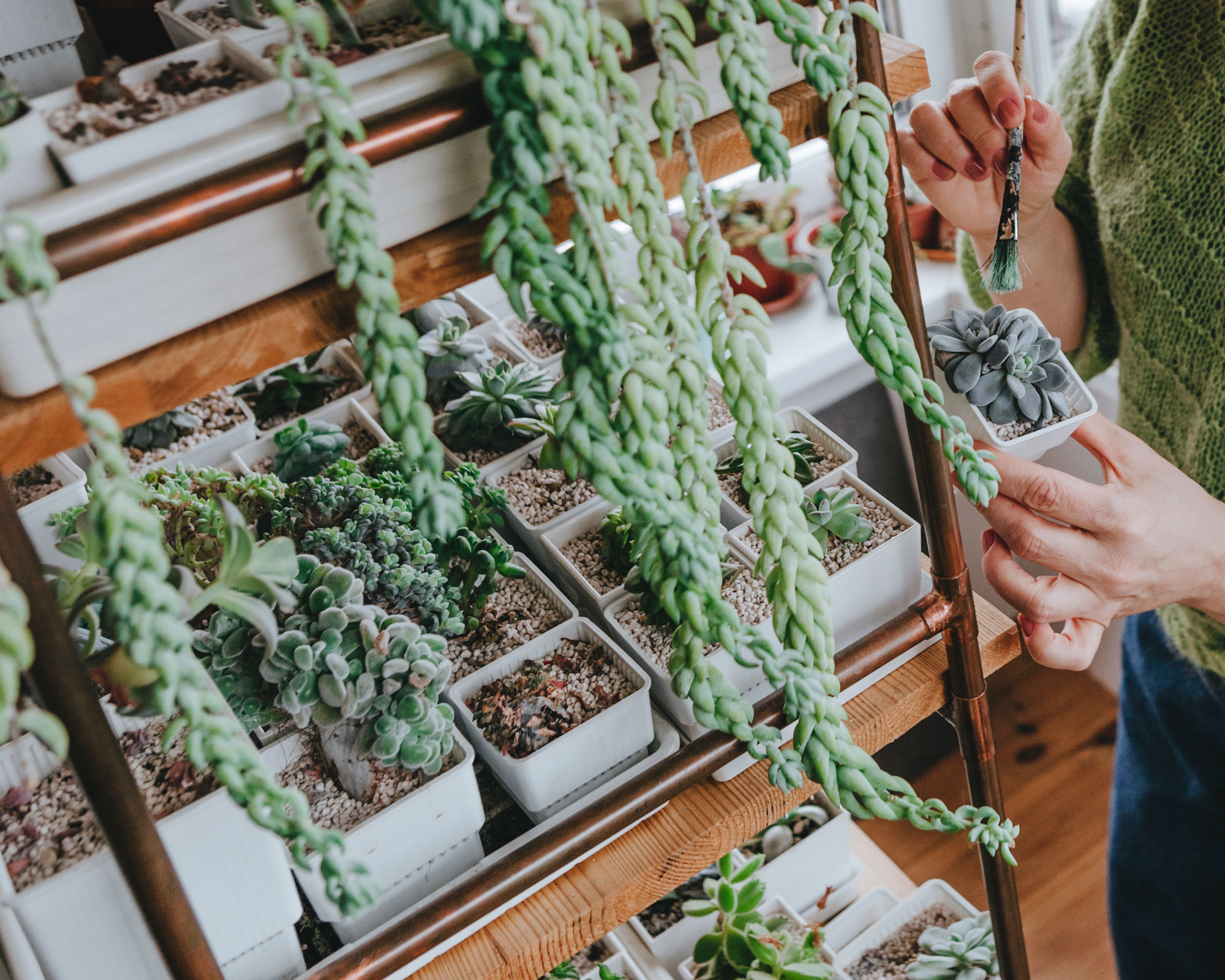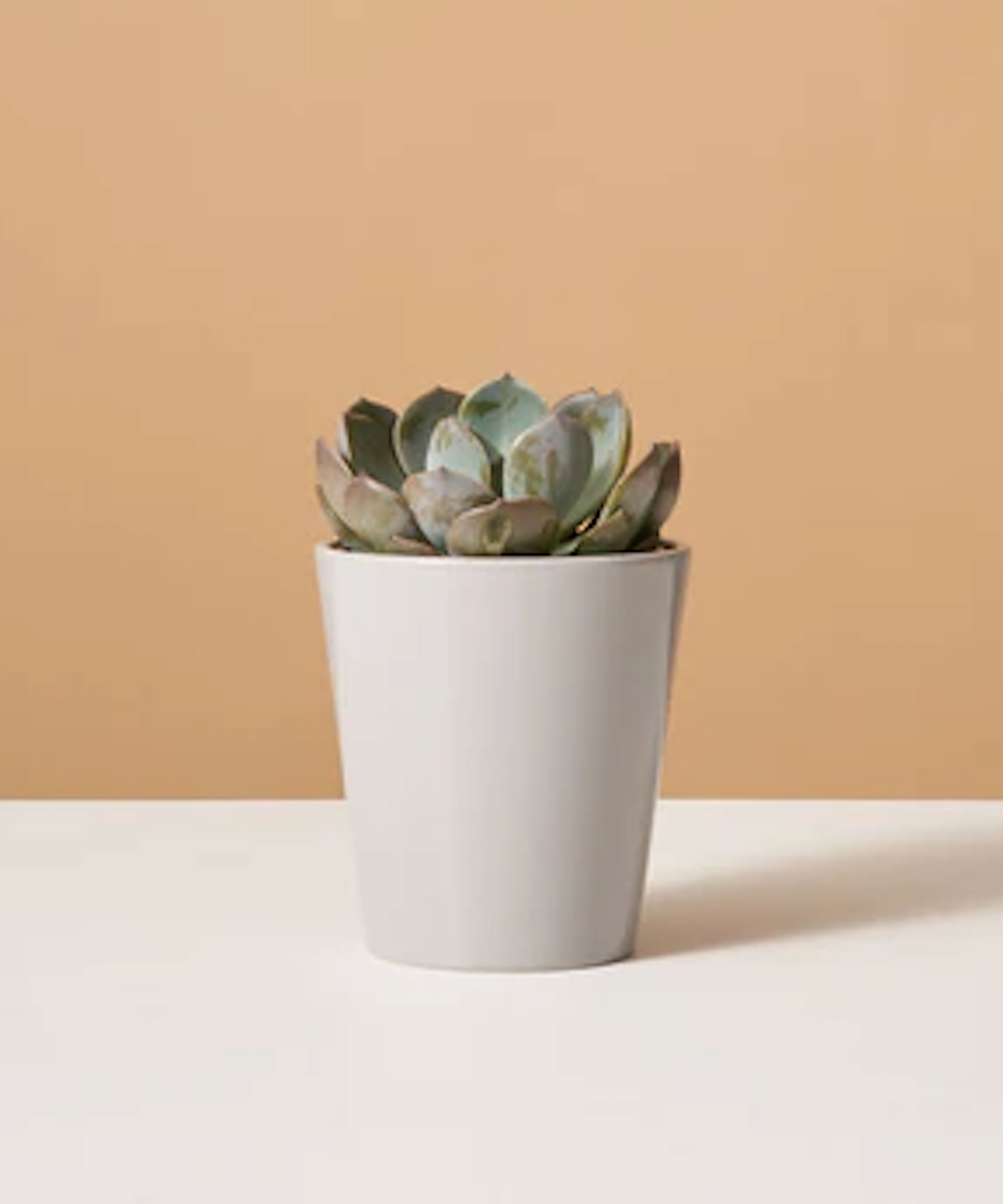
Find out how to care for succulents and these ever-popular house plants will reward you with their easy-going nature and on-trend good looks. They are one of the easiest house plants to grow, but there are some key things you'll need to get right.
We caught up with our green-thumbed experts who reveal exactly what it takes to help these plants flourish, including how to create the perfect growing environment, give them the right amount of light and choose the most suitable type of soil.
If you have recently been eyeing these beauties on Instagram and want to add some to your interior look, our easy expert tips will help you keep your indoor plant collection looking it's very best.

How to care for succulents, according to house plant experts
By learning everything you need to know about caring for house plants, you'll keep them healthy and happy in your home. Succulents are known for being tough little plants but they will still benefit from our expert know-how and a little extra TLC.
"The world of succulents is vast and varied," says plant expert, Sonya Query. "Their remarkable adaptations to challenging environments are lessons in resilience and innovation.
“While they are loved and celebrated by houseplant enthusiasts around the globe, it's essential to treat them with care. Whether you're an experienced gardener or a newbie, these plants offer beauty, diversity, and a direct connection to some of the Earth's most intriguing ecosystems."
They're one of the best house plants for small spaces too. Now find out how to care for succulents with our easy-to-follow, seven-point expert plan to get the best out of your succulent plants.

Sonya Query is a master gardener and marketing director at Love Plants, based in Boulder, Colorado. She believes in making true connections with nature, practicing sustainability and living a healthy lifestyle in and out of the garden. She is highly knowledgeable about how to care for succulents and cacti.
1. Location is everything

One of the most important things to nail when learning about how to care for succulents is finding the right spot for them. They like being exposed to plenty of bright, indirect light. This means finding the sunniest place in your home for them, such as a south or east-facing windowsill, where they can enjoy basking in the light.
"Succulents require plenty of bright light and can even handle direct sunlight," says Nastya Vasylchyshyna, botany expert at Plantum. "Grow them in the best-lit location of your home. However, they’re still prone to sun scorch, so take care to expose new and young plants to direct sunlight gradually to avoid this."
As a rule they need around six or seven hours of light per day. If your succulent looks like it's ailing, such as browning foliage, lanky growth or general limpness, it could be due to not getting enough light in its current spot. Move it, or if your apartment is dark, consider grow lights like these 4-star rated ones from Amazon.

Nastya Vasylchyshyna is a professional botany expert for the Plantum app that helps identify plants and plant diseases and provides care recommendations. She has 4 years' experience consulting on botany-related topics for Plantum.
2. Find the right soil mix

Another key element of how to care for succulents is choosing the right soil. Using a succulent-specific, ready-made potting mix and avoiding standard houseplant potting mixes is definitely the way forward. PerfectPlants Nursery's Organic Succulent Mix will do the job perfectly. Or you can make your own by mixing 70 per cent compost, with 30 per cent grit or fine gravel.
Succulents need soil that allows aeration and good drainage to prevent them from becoming waterlogged, which can lead to their roots rotting.
"The best way to support your succulents in your home is by giving them healthy, well-draining soil," agrees Sonya. "Adding beneficial bacteria and fungi to your soil will also help your plant establish strong, healthy roots that will uptake nutrients quickly, making the plant more resilient to stress. By improving your soil's microbiome you will help your succulents thrive."
3. Choose the best pots for succulents

"Terracotta pots are a great option for plants like succulents that like to stay on the dry side," says plant expert Kamili Bell Hill. "Because of their porousness, clay pots are great for drought-loving plants like succulents and cacti.
"They are also good if you're a little heavy-handed when it comes to watering. The porous nature of clay means it does not retain moisture for long."
Once you've chosen your pot it's time to plant the succulent in the soil, or choose a bigger pot and plant succulents in groups if you like, topping with grit, gravel or small stones.

Kamili Bell Hill combined her love of plants and design to curate online community PlantBlerd, where she pairs beautiful houseplants with simple styling, care and growing guides. After noticing a lack of social media platforms highlighting houseplant collectors that look like her, Kamili also established Instagram community @BlackPeople.WPlants featuring Black houseplant collectors from around the world.
4. Get your plant's watering needs right

Succulents are one of the most drought-resistant plants and can go a length of time without water, so always bear this in mind before reaching for your watering can. It's important to learn how to spot the signs of water-stressed succulents if you want your plants to thrive.
"How often you water will depend on the conditions your succulent is kept in," explains Nastya Vasylchyshyna. "In winter, when temperatures are cool and there’s little natural lighting, you only need to water your plants once every three to four weeks. During the active growing period, succulents generally require watering about once every one to two weeks depending on the species."
Make sure the potting mix has completely dried out, as it's important to water your succulents based on how the soil feels. If the surface is dry to the touch and when you insert a finger a few inches down it's dry underneath too, then it's time to water.
You'll need a watering can with a slim spout like this one from Walmart to direct the water flow right to the roots of the plant.
Make sure the excess drains away completely rather than leaving the succulent standing in pooled water, as this is a surefire way to destroy your plant.
5. Think carefully about feeding succulents

Succulents don’t require much feeding, and often do fine without it. However they can benefit from plant food in the warmer months to encourage growth. Use a specialised feed like this Succulent Fertiliser from Perfect Plants Nursery, which is a slow-release fertiliser that lasts for a year.
"Occasional applications of a specialised fertiliser for succulents during the active growing season can give your plant a nice boost," says Nastya Vasylchyshyna. ”Refrain from feeding your succulent during the first couple of months after repotting, while it’s sick, or while it’s dormant."
6. Care for succulent leaves

We already know succulents need a lot of light to thrive, so anything that gets in the way of light absorption can hinder their growth. This includes a build-up of dust on their leaves. Even the slightest smidgen of dust can delay the all-important process of photosynthesis, preventing your plant from growing healthily.
This means it's important to dust succulent plants regularly. Carefully wipe the leaves and spines with a damp cloth, a soft, dry paintbrush or clean make-up brush to get to those hard-to-reach spots.
Succulents don’t generally need pruning, though some varieties can be cut back to encourage new growth. But it's important to trim off any dead leaves to stop pests and diseases getting a foothold in decaying material.
Finally, never use a plant mister to spritz succulent leaves as it will add too much moisture, and creates exactly the right environment for pests and diseases to thrive.
7. Repot succulents when necessary

Keeping an eye on your plant and making sure it has enough space is a key part of how to care for succulents successfully.
"All succulents should be replanted when they outgrow their current pot or when the soil has become too compacted, as it will be depleted of nutrients," explains horticulturalist Tammy Sons of TN Nursery.
Choose a pot slightly larger than the current one, ensuring it's made of a porous material, such as terracotta, to allow for proper airflow. Use a well-draining soil mix specifically formulated for succulents, as before. To improve drainage, you can also add perlite or sand to the soil mix.
Water the plant thoroughly once it's potted up to help it get established in its new home. Allow the soil to absorb the water before letting any excess drain away. Avoid watering again until the soil has thoroughly dried out to prevent the soil becoming waterlogged.

Tammy Sons is the CEO of TN Nursery in middle Tennessee, and an expert plant advisor who studied horticulture at Texas Tech University. She is passionate about gardening and the environment, and writes about a wide range of topics.
What to shop

Echeveria Garotto is a succulent native to Mexico. This vibrant plant is prized for its large rosette growth habit, adorned with blueish green pigmentation. It's perfect for a small windowsill.

This fertilizer comes in an 8 fl oz bottle with a dispensing pump designed to measure out the perfect amount of fertilizer. The convenient pre-mixed formula is ready to use.

This stylish Aloe plant comes in a decorative speckled ceramic pot by Terrain, the Anthropologie garden and home brand deeply rooted in nature and plant life.
FAQS
What is the easiest succulent to grow?
"Echeveria are generally considered to be the easiest succulent to grow, and they are widely available, tending to make them a budget-friendly option too," says Sonia Query.
These compact succulents feature colorful leaf rosettes that look like tiny waterlilies. Choose from jade green, purple, pink or pale blue-green leaves, and pot them up individually or in groups to create a colorful, textured display.
Echeverias are a low maintenance option too, and you can leave them to get on without any fuss. They also flower reliably, producing lantern-shaped orange, red or pink flowers on long stems in spring and summer.
Other popular succulents to choose from include Aeonium, which produces leafy rosettes on sturdy branches in colors ranging from pale green to orange-red and dark burgundy, and the ever-popular Aloe varieties including the smaller lace aloe (Aloe aristata), and the partridge-breasted aloe (Aloe variegata), with its striking white-striped foliage.
Can succulents be taken outside in summer?
Succulents will enjoy a vacay in the garden during summer, thriving in sheltered and sunny spots. Also many of them can stay outside till fall, as they are more tolerant of cold than you might expect.
Some succulents are frost resistant despite their origins (remember it gets pretty cold in the desert at night), and can stay outside all year round if you live in a warm zone.
Take your succulent collection outside in spring once there is no risk of frost, and protect them on very bright and sunny days to prevent leaf scorch.
If you're on the lookout for more easy house plants to add to your succulent collection, try Chinese money plants with their gorgeous glossy leaves. You can also find out how to propagate succulents for an easy way to grow your collection for free.
Join our newsletter
Get small space home decor ideas, celeb inspiration, DIY tips and more, straight to your inbox!
Lifestyle journalist Sarah Wilson writes about flowers, plants, garden design and trends. She has studied introductory garden and landscape design and floristry, and also has an RHS Level 2 qualification in the Principles of Plant Growth and Development. In addition to homesandgardens.com and livingetc.com she's written for gardeningetc.com, Real Homes, Modern Gardens and Country Homes & Interiors magazines. Her first job was at Elle magazine, during which time a trip to the beautiful La Colombe d'Or in St-Paul-de-Vence led to an interest in writing about all things botanical. Later as lifestyle editor at Country Homes & Interiors magazine the real pull was the run of captivating country gardens that were featured.